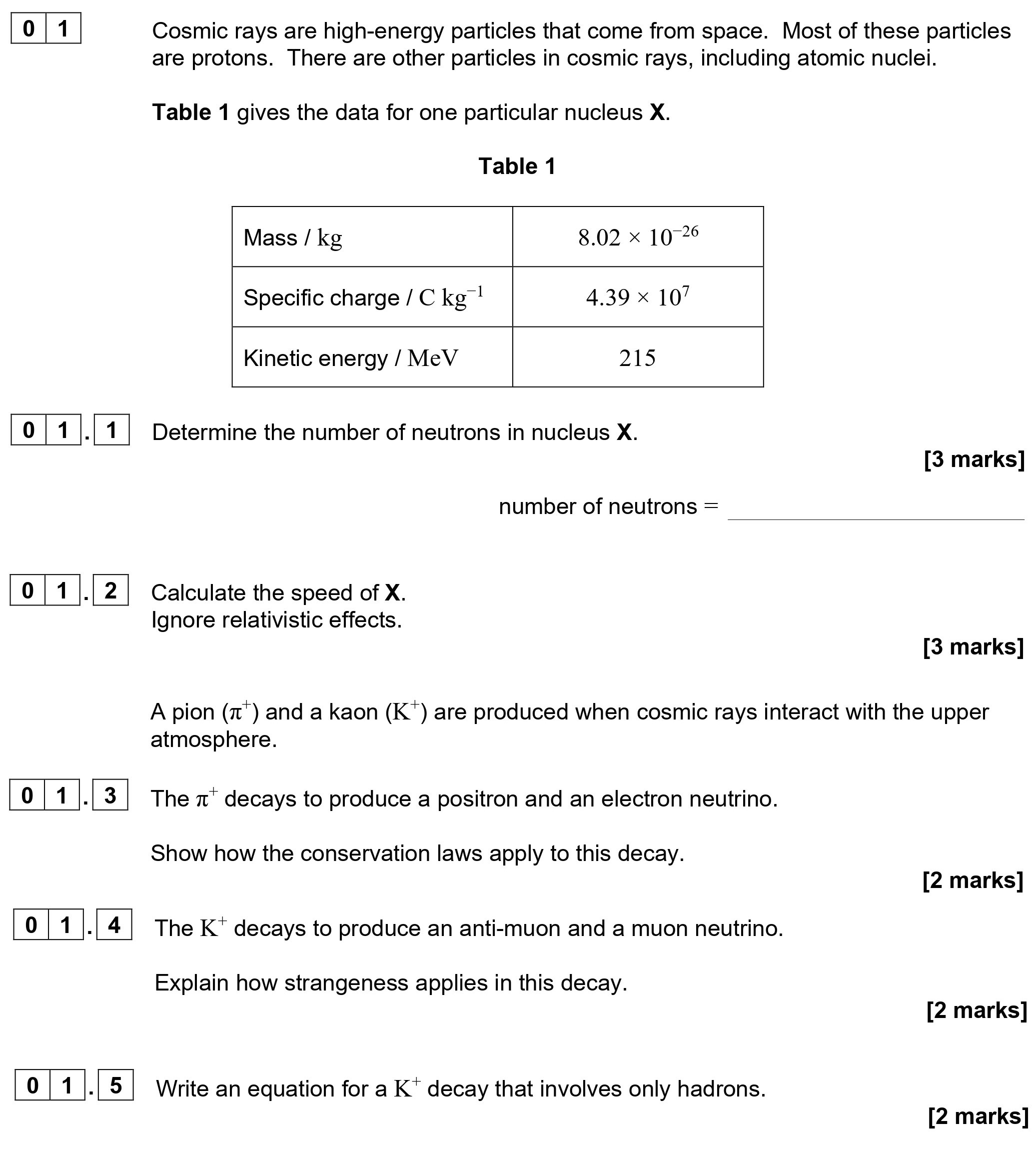Photo AI
Cosmic rays are high-energy particles that come from space - AQA - A-Level Physics - Question 1 - 2021 - Paper 1
Question 1

Cosmic rays are high-energy particles that come from space. Most of these particles are protons. There are other particles in cosmic rays, including atomic nuclei. ... show full transcript
Worked Solution & Example Answer:Cosmic rays are high-energy particles that come from space - AQA - A-Level Physics - Question 1 - 2021 - Paper 1
Step 1
Determine the number of neutrons in nucleus X.
Answer
To find the number of neutrons in nucleus X, we first need the number of protons, which can be found using the specific charge and mass. The specific charge is defined as the charge per unit mass:
[
\text{Specific Charge} = \frac{q}{m}
]
From the table, we have:
[
\text{Specific Charge} = 4.39 \times 10^7 , C , kg^{-1} , ext{and} , Mass = 8.02 \times 10^{-26} , kg
]
Converting kinetic energy from MeV to Joules (1 MeV = 1.602 x 10^-13 J):
[
\text{K.E.} = 215 , MeV = 215 \times 1.602 \times 10^{-13} , J = 3.44 \times 10^{-11} , J
]
Next, using the kinetic energy formula:
[
K.E. = \frac{1}{2}mv^2
]
we can find the speed of the nucleus X, but to find the number of neutrons, we will determine the number of nucleons (N):
[
N = \frac{Mass}{mass per nucleon}
]
Assuming average nucleon mass = 1.67 \times 10^{-27} kg for protons and neutrons and calculating:
[
\text{Nucleons} = \frac{8.02 \times 10^{-26}}{1.67 \times 10^{-27}} \approx 48
]
Then we subtract the number of protons to find neutrons.
Step 2
Step 3
Show how the conservation laws apply to this decay.
Answer
In the decay of the pion (π-):
- Lepton number conservation: Initial lepton number = 0, Final lepton number = +1 (positron) - 1 (electron neutrino) = 0.
- Charge conservation: Initial charge = -1 (π-), Final charge = +1 (positron) - 1 (electron neutrino) = -1.
Step 4
Explain how strangeness applies in this decay.
Answer
The K+ decay conserves strangeness; initially, strangeness is 0. In the decay: K+ (strangeness +1) decays to an anti-muon and a muon neutrino, thus introducing a change of strangeness, but total strangeness remains consistent in the process.
Step 5
